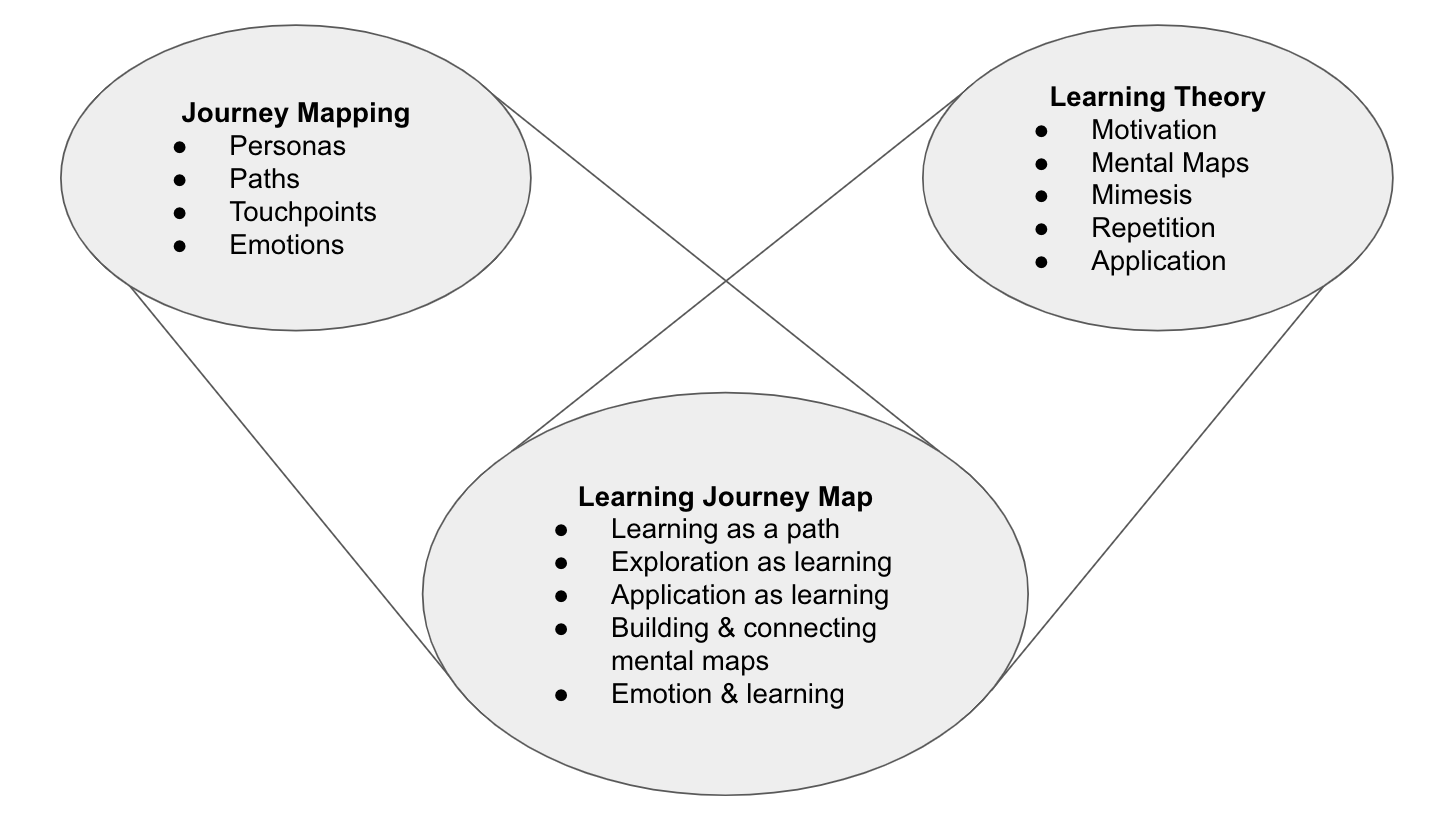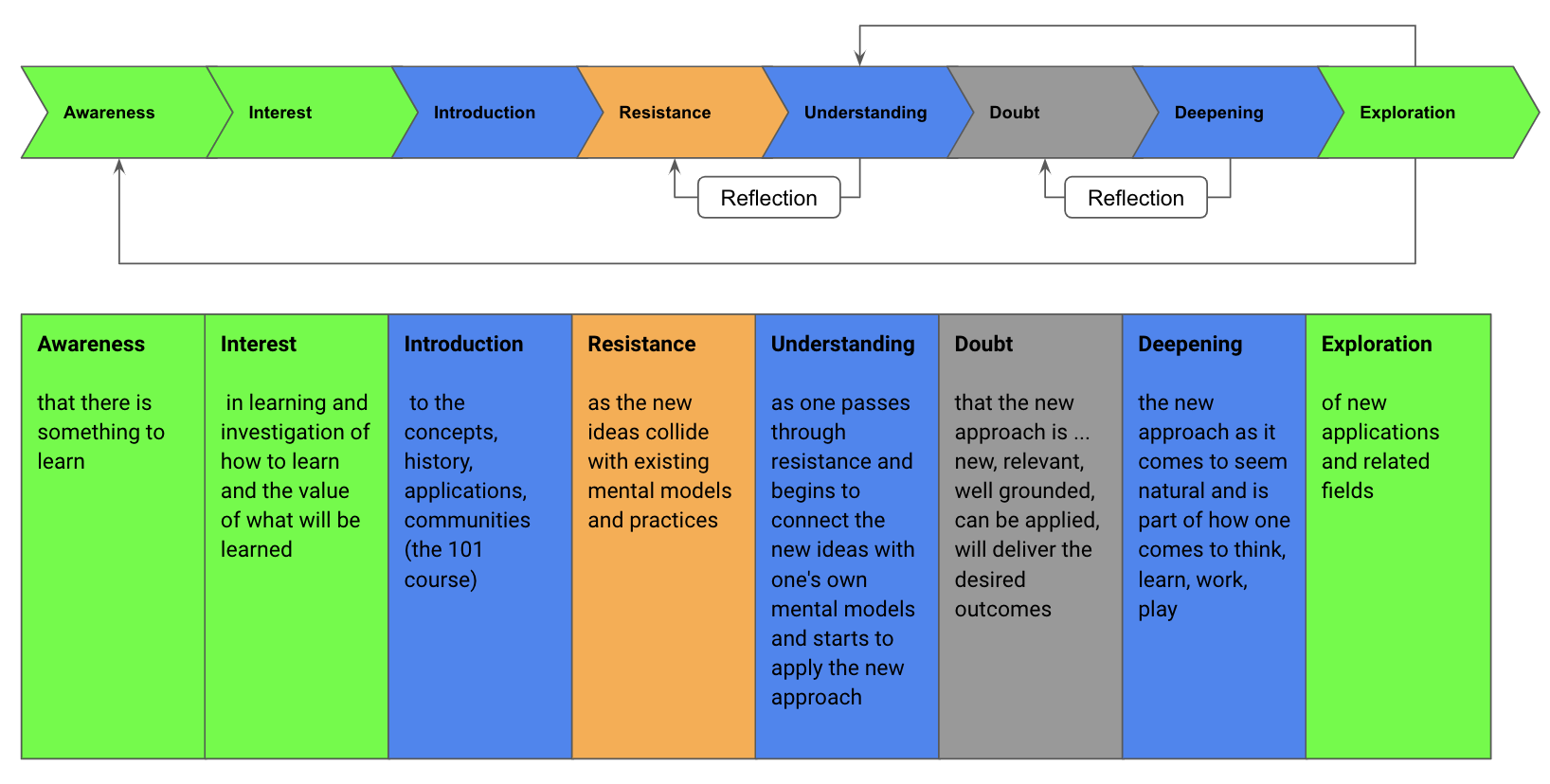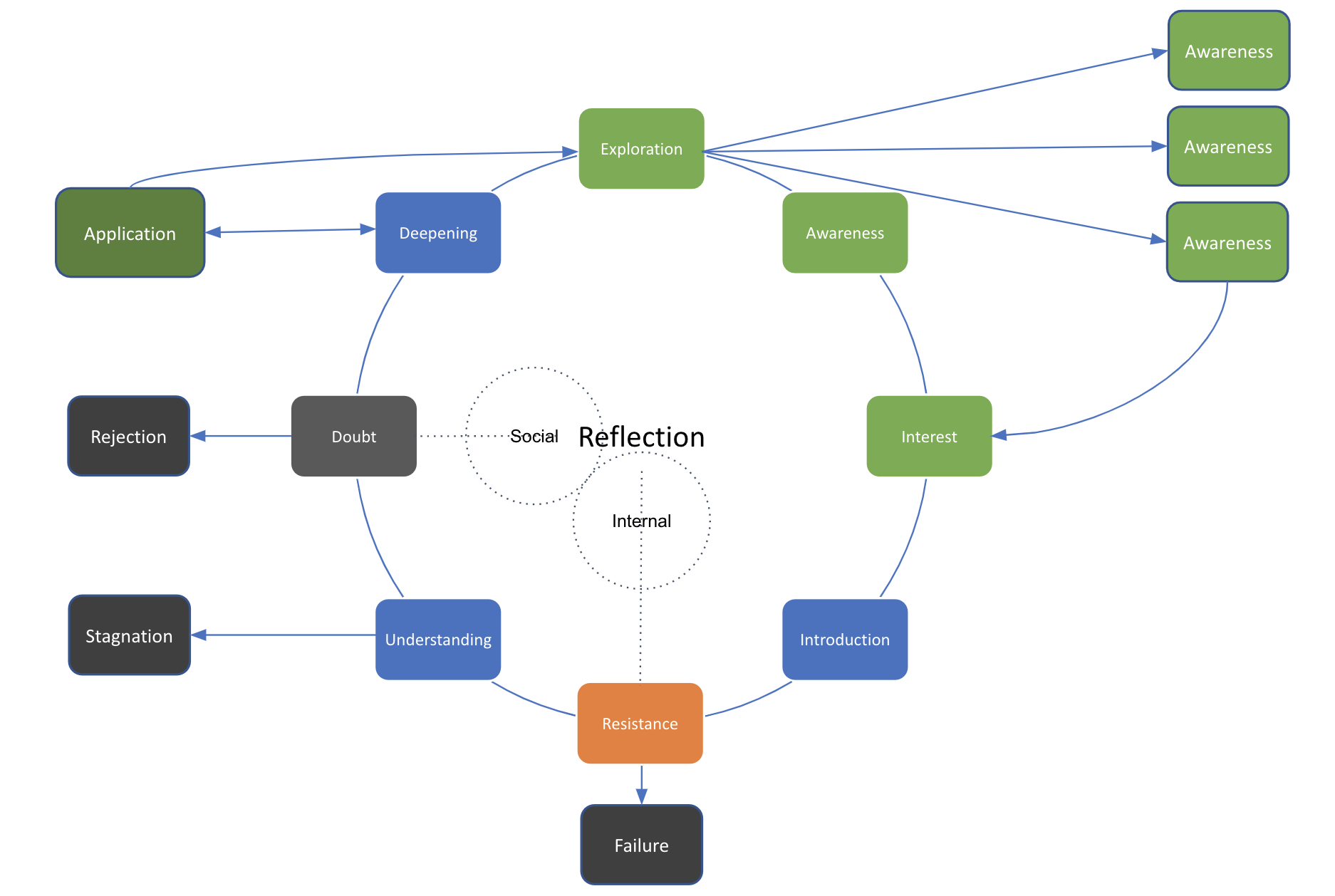The learning journey map
Steven Forth is co-founder and managing partner at Ibbaka. See his skill profile here.
In times of change, learners inherit the earth, while the learned find themselves beautifully equipped to deal with a world that no longer exists. - Eric Hoffer.
Much of Ibbaka’s work involves learning in one form or another. A Learning Mindset is one of our core values. We need to learn constantly in order to deliver value to our customers and partners. And we are often engaged to support our clients in the adoption of new skills and frameworks, such as customer value management, value-based pricing, value-based sales and skill management. We even develop custom learning content in these areas for some of our largest clients.
The Ibbaka Talent Platform let’s me signal the skills I am currently targeting for development (below are my current targets for 2022).
Please take our survey Critical Skills for 2022
These are not technical skills, like learning a programing language or analytical technique. They are larger frameworks for understanding and acting on the world. A competency model for one of these frameworks would include multiple core skills and behaviors. Learning one of these frameworks to the point that one can apply it involves a journey, one that can take many different paths and lead one to meeting all sorts of different people.
A concept blend for the learning journey map
Reflecting on my own learning and what I observe in others led me to try to map the learning journey. Ibbaka uses journey maps a lot in its work, often in combination with other things, such as skill management or customer value management. Combining concepts from different disciplines comes naturally to us and is even a formal part of our innovation process. (If you are interested in this a good place to start is Mark Turner’s work on blending and conceptual integration.)
Below is a concept blend of ‘journey mapping’ and ‘learning theory.’
From journey mapping we take the idea of personas, paths, touchpoints and the importance of emotion in understanding a journey. From modern learning theory we borrow ways to frame motivation, mental maps, exploration, application and the role played by mimesis (mirroring) and repetition and (if you are interested in this discipline check out Contemporary Theories of Learning: Learning Theorists … In Their Own Words).
This concept blend helps us see learning as a journey along a set of paths. These are the paths that lead to interest, understanding, application and exploration. Part of learning a new framework is building a new mental map of the space and connecting it to the other mental maps that you use to make sense of the world and predict the impact of actions.
The learning journey map
A first sketch of the learning journey is shared below.
(The color coding here is green for the initial stages that prepare one to learn, blue for the learning phases, orange for resistance and grey for the fog of doubt.)
It starts with awareness that there is something out there that could be learned. For example, I have been aware of Biodesign (building expertise in Biodesign is one of my target skills for 2022) for about a decade through work in the medical technology space and participation in the global design thinking community. I had dabbled it it, reading a few articles on the Stanford University website, taking a course, but it was peripheral to my main work.
This fall, I moved from ‘awareness’ to ‘interest’ as I listened to the product manager at a major medical device company talk about how his team had used concepts from Biodesign to get a deeper understanding of user and patient needs and how these had changed the requirements for a solution.
Expanding the learning journey map with some explanation gave the following.
Note the importance of reflection here. I am a big fan of Donald Schon’s and his book The Reflective Practitioner: How Professionals Think in Action has become a touchstone in my own work. That is not where these two feedback loops come from though. I first shared some of these ideas in the LinkedIn Design Thinking group that I manage. Several people asked what role reflection plays and where that fits into the learning journey.
One answer is that one should be continually reflecting on what one is learning and how to apply it. But when I dug deeper into this, and observed how the people around me learn, I found that reflection is most relevant at two critical, but often suppressed, stages in the learning journey: Resistance and Doubt.
The importance of resistance and doubt in the learning journey
Learning anything significant is difficult. It should be difficult. Learning is the rewiring of our mental models and the building of new habits of thought and action. Learning is change. Change leads to resistance. If we changed too easily the changes would not stick.
When learning something new one naturally resists anything that requires us to question what we already know. Some people go so far as to claim that the greatest obstacle to learning is not the learning itself but unlearning. Unlearning is one of the things that is happening in this resistance phase. Without resistance, and the unlearning that accompanies it, learning will be shallow, seldom applied, and quickly forgotten. Unlearning is something we are investigating as a critical skill (see the list of critical skills at the end of this post).
Once one has passed through resistance there is a chance of real understanding. For most practical frameworks, understanding is revealed in application. One learns, and demonstrates learning of a new framework, by applying it. Some of these applications are bound to fail. This can be because the framework is imperfectly understood, because of failures in how the framework was applied, or because of shortcomings in the framework itself. These failures are part of learning, but they result in doubt.
Doubt as to how well grounded the framework is or its relevance to one’s own work and situation.
Doubt as to how well one really understands the framework and how to apply it.
This doubt is also an important part of the learning journey. The path though doubt, to deeper understanding, also passes through reflection. Here the reflection is more outward looking than inward. In my own practice I find it is most useful to work through the doubt with other people, so the reflection is not so much a solitary act as a set of conversations and work on teams.
One signal that my own learning journey in Biodesign has passed from Understanding to Deepening is when you see several teams or projects involving Biodesign show up on my Ibbaka Talent profile. Applying this framework with other people is how I will resolve my doubts.
The same is true of the Learning Journey Map. This is a framework that we are learning to apply at Ibbaka. There will be resistance to learning it and then doubt as to its relevance. We will work through these doubts, if we work through them, by applying the learning journey map to our work.
One of the insights, for me anyway, from this learning journey map is the central role played by resistance and doubt and the importance of surfacing them and addressing them as part of learning.
A learning journey or a learning spiral
One known weakness of journey maps is that they imply a linear process. Few things in life are so simple that they can be mapped as a linear set of steps. Learning is often thought of as a spiral where one comes back to the same concepts over and over again, deepening one’s understanding and finding new applications.
Here is the learning journey sketched as a cycle (sketching is another skill I have targeted to improve in 2022). One could also think of this as a graph (graph theory is yet another of my target skills) in which the phases of the learning journey are the nodes and the relationships between them the edges (not yet labelled as they will be in a future version of this).
In this sketch, I also show the drop out points. Resistance can end in a failure to learn; doubt can lead to rejection of the framework. Also, if learning ends at understanding, and does not progress through doubt to a deepening of knowledge and application, stagnation will result.
This learning journey map is a first attempt. If you know of other learning journey maps (learning journey not teaching journey) please share them with us at info@ibbaka.com. We would also like other feedback on how you might use or adapt this approach.
May you have great success with your own learning in 2022!







